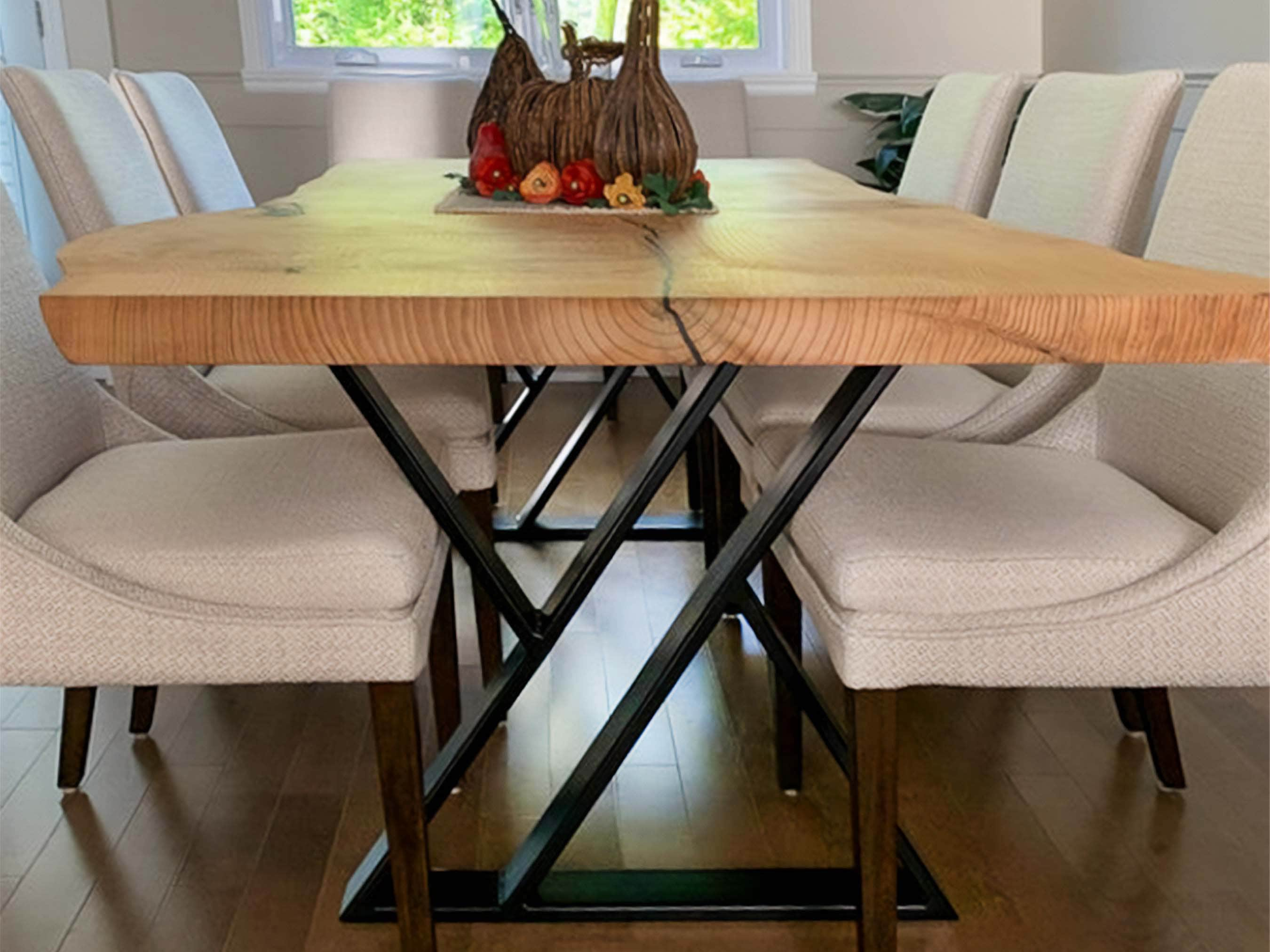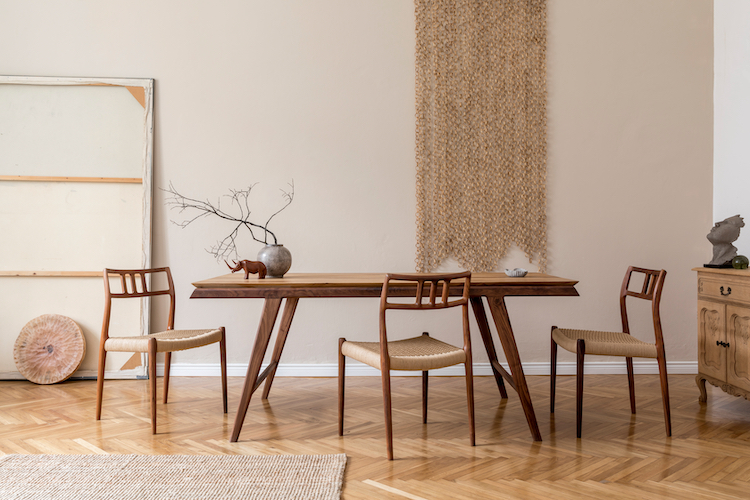How to Maintain and Care for Your Dining Room Table Legs
How to Maintain and Care for Your Dining Room Table Legs
Blog Article
How to Select the Perfect Eating Room Table Legs for Your Home Décor
Selecting the suitable dining-room table legs is a nuanced process that requires cautious consideration of different elements, including your room constraints, visual choices, and practical needs. The interplay between materials, designs, and dimensions can dramatically affect the ambiance of your eating area, making it important to approach this choice systematically. As you contemplate the myriad options offered, it comes to be clear that the appropriate selection expands past mere look; it can improve your overall eating experience. What elements should you focus on to ensure your choice complements your home's special personality?
Assess Your Dining Space
Evaluating your dining room is critical for choosing the right table legs that complement both looks and capability. Begin by gauging the dimensions of your eating location, including ceiling elevation, floor area, and distance to various other furnishings. This information will certainly help figure out the suitable dimension and elevation of your table, which directly affects the selection of table legs.
Next, consider the style and design of your dining area. For circumstances, an open-concept layout might benefit from table legs that use aesthetic agility, such as slender metal or acrylic choices. Conversely, an extra conventional setting might ask for durable wood legs that give a sense of permanence.
Examine the existing color scheme and materials in your eating location. Harmonizing the table legs with these aspects creates a natural look that improves the total style. Additionally, think of the performance needed in your area. As an example, if you frequently host large events, think about legs that offer extra assistance and stability.
Inevitably, a comprehensive analysis of your dining space will lead you in making an informed choice, ensuring that your table legs not just enhance the visual allure yet likewise serve useful functions.
Consider Your Style Preferences
When selecting dining-room table legs, it is necessary to show on your personal style choices, as they considerably affect the total aesthetic of your eating area. Your selection of table legs can either complement or comparison with existing décor, making it crucial to align them with your preferred interior design style.
If your home leans in the direction of a modern-day visual, think about smooth metal or minimal wood legs that supply a tidy, minimalist appearance. For an extra conventional method, elaborate wooden legs with complex makings can include a touch of style and refinement. Industrial designs gain from robust, resources such as recovered timber and steel combinations, showing a rugged charm.
Furthermore, farmhouse and rustic styles usually prefer strong, beefy legs that stimulate a sense of heat and convenience. On the other hand, if your decor is eclectic, you could select unusual shapes or a mix of materials to create visual interest.

Evaluate Product Options
The choice of product for dining room table legs plays a crucial role in both sturdiness and aesthetic allure. Usual materials consist of wood, steel, and composite alternatives, each offering unique qualities that can influence the total appearance and longevity of your table.
Wood is a timeless choice, understood for its warmth and adaptability. Hardwoods like oak and walnut provide phenomenal strength and can be ended up in numerous spots to match any type of style. However, softwoods like pine are extra vulnerable to scratches and damages, making them less optimal for high-traffic locations.
Steel legs, commonly crafted from steel or light weight aluminum, exhibit modernity and industrial appeal. They are very sturdy and resistant to wear, making them ideal for families with children or constant celebrations (dining room table legs). In addition, metal can be ended up in various shades, enhancing the personalization possibilities
Composite products, such as MDF or laminate, deal cost and varied designs. While commonly much less sturdy than solid timber or steel, they can still supply an elegant appearance and are typically simple to preserve.
Ultimately, the product you select must line up with your way of living, aesthetic choices, and the level of usage your table will experience.
Determine Elevation and Dimension
Choosing the appropriate elevation and size for your dining room table is crucial for both functionality and convenience. The conventional height for eating tables normally ranges from 28 to 30 inches, enabling enough legroom for a lot of individuals when seated. It is vital to consider the go right here dimensions of your eating room and the kinds of chairs you intend to utilize.

In addition, take into consideration the percentages of your eating space. A larger table in hop over to these guys a sizable location can create a grand setting, while a smaller table works well in more intimate setups. Inevitably, the right elevation and size will balance with your general decoration and improve the eating experience for you and your visitors.
Explore Personalization Possibilities

Furthermore, the style of the legs can be personalized to fit various styles, such as rustic, modern, or industrial. For example, conical legs can evoke a mid-century modern feel, while chunky, block-style legs may resonate with typical or farmhouse style.
House owners can additionally check out shade surfaces, from all-natural timber discolorations to paint, enabling them to match or contrast with the tabletop and surrounding style.
Moreover, leg elevation can be adapted to suit details seating plans or individual preferences, boosting both convenience and functionality.
Finally, unique decorations, such as makings or attractive braces, can even more customize the table legs, making the dining experience not simply a dish yet a statement piece in the home. By taking into consideration these personalization options, house owners can develop a dining area table that genuinely shows their originality.
Conclusion
Selecting the optimal dining-room table legs needs cautious factor to consider of various factors, consisting of the dimensions of the dining area, design choices, product longevity, and wanted elevation. Personalization choices further enhance the capacity to accomplish a natural visual that matches the overall decor. By systematically evaluating these elements, house owners can ensure that the chosen table legs not only accomplish functional demands yet also contribute favorably to the dining experience and ambiance of the home.
Picking the optimal dining space table legs is a nuanced procedure that calls for mindful factor to consider click here to find out more of different aspects, including your room constraints, aesthetic choices, and practical demands.Assessing your eating area is crucial for selecting the right table legs that match both visual appeals and capability.When identifying size, measure the location where the table will be positioned to ensure it fits pleasantly, permitting for at the very least 36 inches of clearance around the table for simple activity. A bigger table in a spacious location can produce a grand setting, while a smaller table functions well in even more intimate settings.Selecting the perfect dining room table legs needs cautious factor to consider of different factors, including the dimensions of the eating room, design choices, material longevity, and desired height.
Report this page